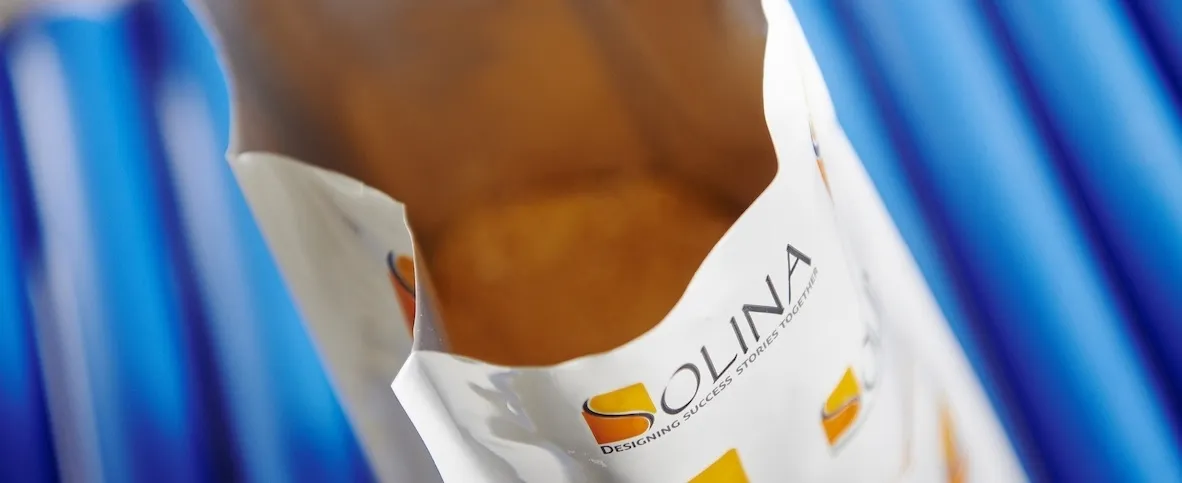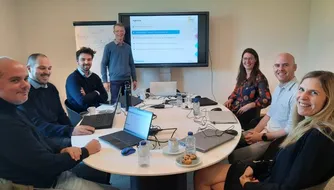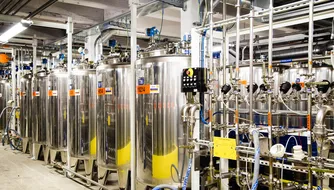Seasoned inventory project
Solina optimises inventories with Optimact

Business group Solina is specialised in the development and production of functional food additives, sauces, herbs and aromatic blends. Solina’s considerable growth over the past years forced the company to take a closer look at its inventory management.
The prime intention was chiefly to improve the liquidity position. The organisation contracted Xeleos Consulting for this. Thanks to the necessary analyses and its Optimact software, Xeleos Consulting managed to reduce the inventories in the Belgian sites.
The Solina Group is the result of a long history of various take-overs (see box). The two Flemish production sites have 78 workers in total. Together they generate a turnover of about 35 million euros. About 15% of the production is for export. “Through strategic mergers in different segments of our business, we now have a broad spectrum of customers ranging from small butchers and caterers to retailers and large industrial customers,” explains Ward Terryn. “Depending on the type of customer we supply very diverse products. For butchers this chiefly concerns spice mixes, industrial customers are provided with a series of functional food ingredients relating to preservation, smell and flavour. The assortment comprises powders, pastes, liquids and sauces. We are able to supply companies with the exact quantities they require in that a bag of a specific product exactly matches the quantity required for their production process. Furthermore, our R&D departments develops ingredients tailor-made to the customer.
Finger on the inventory
However, Solina’s strategy has left the organisation with huge inventories over the years. “It was becoming increasingly problematic to control the inventory volumes.This chiefly concerned the products meant for the industrial sector which we supply from Izegem. As some spices have to come from far away, we often bought very large quantities. Fortunately, these products have a long shelf life, but sometimes we were stuck with overstock. And more and more warehouse space had to be rented to store these volumes. Over time, people assumed we had become a ‘trader’ and we wanted to get rid of that image”, says Ward Terryn. “Moreover, since the merger of Sfinc and Savena into Solina Group in 2012, we have been confronted with a number of strict financial targets. It has been known for a long time in the organisation that inventory levels could be improved. The problem is that Solina was having difficulties keeping the finger on the pulse. This is why Ward Terryn went in search of a partner that was able to provide the necessary support: “We had little confidence that an ERP (Enterprise Resource Planning) vendor would be able to deal with inventory parameters in a very dynamic
way. This is why we went in search of specific software we knew would be able to do this. We opted for Xeleos Consulting as a partner. Its Optimact software was able to pin-point the sore points very quickly and that convinced us. We were one of the first companies to work with this tool. Obviously this was a risk, but on the other hand it gave us the advantage to customise the package”.
Phased inventory reduction
Xeleos Consulting came just in time, because in the summer of 2013 the pressure to reduce inventory levels increased. To speed up the project, the current state and objectives at software and organisational level were laid down at weekly meetings. Actions were systematically connected to these objectives. In a first phase of the project the inventory strategy of all items was called into question.
“We used to produce all items in stock. Now we asked ourselves which products we should keep in stock and which ones we should produce to order”, outlines Ward Terryn. “And we always clearly defined the service we wanted to provide for each of those items. After all, whereas for strategic items a service level of 95% is a must, a service level of 80% for the least important categories can suffice.”
Solina conducted this analysis exercise using Optimact based on various product characteristics, such as the sales volumes. After this first phase which took a couple of months, Solina already managed to reduce the inventory by 12%. In a second phase Solina abandoned the systematic calculation of inventory parameters with Excel. Optimact would do this from now on. In all, it concerns about 5,000 references, including both raw materials and finished products. Optimact generates a monthly forecast for these items and makes a dynamic recalculation of all inventory parameters. Optimact automatically proposes the most suitable forecast method which the planner can manually change if necessary. If a product has a two year history, seasonal influences are also taken under consideration. Based on all collected data, the organisation makes the necessary decisions, for example in the field of buy orders, production orders, etc. Solina’s inventory dropped another 25
percent after this second phase.
Room for growth
Since Optimact’s arrival, Solina’s liquidity position rapidly improved and huge cuts were made in external warehouse costs. In addition, both ambient and cooled space has now been freed up within the company’s own warehouses, allowing further growth to be absorbed internally. “Much of the freed up space is thanks to the ABC/ XYZ analysis we now consistently apply. On the one hand we take into account the value (turnover/sales) and on the other hand the dynamics of the consumption or the sale”, says Ward Terryn. “Based on this classification we have already adopted a number of drastic measures, particularly in the field of raw materials and packaging. For example, we no longer buy gelatine - an expensive raw material - by the load from Italy but by the pallet from the Netherlands. In addition, we no longer buy the empty containers we use for marinades by the load from the manufacturer across the street, but from a distributor where we can buy the containers by the pallet”.
Optimact also offers the organisation a better overview of the inventories on the different Belgian sites.” The idea is to have even more of our strategic inventory on a site based on that data. Eke is a logical choice for herbs because we can make intercompany herb shipments to Izegem. We are also bringing the ERPs in our various sites to Microsoft Dynamics AX, which will ultimately result in an even better overview of the inventories at group level in Optimact. It is also very likely that within the foreseeable future the French sites will be introduced to Optimact”.
And finally, the new way of working also clearly benefits the internal processes. “With Optimact, abnormal changes in demand, high order quantities and dead inventories immediately become apparent. No less than four times a day, an update of the orders and inventory positions based on the data is automatically sent from the ERP to Optimact. For example, if a customer doesn’t buy an item for a month, we will know immediately. We realised we created too many different items in recent years. We’re now in the habit of dropping about twenty per meeting,” concludes Ward Terryn. “This
high visibility gives us a good basis to discuss problems and opportunities with sales, purchases and R&D on a monthly basis and keeps the dynamic we created going. It also
allows us to make continuous inventory improvements.”


